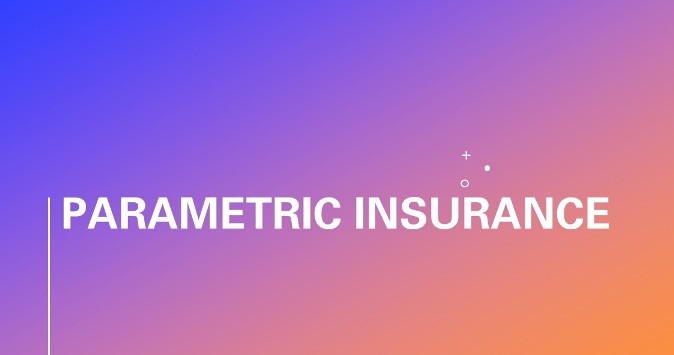Insurance is an intangible product. It has always been a tough product to manufacture (underwrite) and more tough to sell. But there is a glimmer of change on the horizon, in the form of Parametric Insurance.
Recently, Mr. Debasish Panda, Chairman, IRDAI while speaking at 16th Health Insurance Summit 2022 in New Delhi suggested bringing more parametric insurance products in the Indian Market which has created much excitement.
What is Parametric Insurance:
Parametric Insurance is an agreement under which an entity assuming risk (the “insurer”) agrees to pay the indemnitee (the “insured”) an agreed amount upon the occurrence of a specified event, such as an earthquake or hurricane or storm of specified intensity. The event, or “parameter,” is often indicated by an established and authoritative index for that type of event, such as the Richter scale for earthquake intensity or theSaffir-Simpson scale for hurricanes or Knot i.e., nautical mile per hour for storm. For that reason, parametric coverage is also called “index-based insurance.”
Parameters can be defined by other objective factors, such as the extent of physical damage, and are typically limited to certain time periods and geographic areas. Even customized policy can be developed based on wind speeds, storm surge, rainfall (or lack thereof), and other factors, both natural and human-driven, alone or in combination.A set of parameters define whether an event occurred and its intensity, entirely removing the need for a claims adjuster as well as the long and tedious process of submitting and re-submitting of documents to substantiate an insurance claim. It offers faster payouts than traditional insurance because it is quick to verify if the objectively observable trigger even passed the threshold specified in the policy.
Illustrations:
- Let us consider an asset situated in coastal areareceives significant damage from a category 4 storm with winds gusting to 160 kilometer per hour. The losses fall within the Insured’s property policy deductible. Hence no claim is admissible under Property Insurance. But the damage to ancillary services halts production and leads to increase in business interruption cost. If the Insured has Business Interruption Insurance, then the claim would be admissible under this section but thesettlement process would be lengthy, leaving insured with less liquidity in the meantime.
Now if the same storm causes heavy damage and disruption to another Insured, which has supplemented its property policy with a bespoke, index-based trigger that starts paying out when wind speeds top 130 kilometer per hour; the storm qualifies, and the insured would be able to access funds within a few weeks to rebuild and restart operations.
- Under traditional Travel Insurance, if there is flight delay or cancellation, the insured has to sort out the issue and then to provide proof to the Insurer that the claim is valid. It takes weeks to collect the documents and then the insured gets the claim possibly few weeks later. But under parametric insurance the flight is tracked proactively by the Insurer and before the insured knows something has gone wrong the claim is paid and the insured is informed. It is a greatexperience for the traveller.
- In the health insurance sector, Parametric Insurance policy may be designed as supplementary cover to Indemnity based Insurance policy. This type of insurance is to cover say, the annual economic cost of pains and sufferingsof the patientbased on the diagnosis done by the Hospital as per ICD-10.(ICD-10 refers to the tenth edition of the International Classification of Diseases, which is a medical coding system chiefly designed by the World Health Organization).
Different Triggers:
The most common triggers are natural catastrophe perils such as cyclones, earthquakes, bushfires, hailstorms, floods and landslides. Triggers can also include other adverse and prolonged weather events, such as excess temperature, droughts, and in sufficient sun/wind conditions.
Data and technology are making possible additional triggers, such as pandemic related scenarios, and cyber outages.
Difference between Indemnity based traditional Insurance and Parametric Insurance:
| Indemnity based traditional Insurance | Parametric Insurance | |
| 1 | Payment is triggered by an actual loss. | Payment is triggered by an actual event. |
| 2 | Reimbursement is made via an adjusted assessment of loss sustained. | Payment is made in alignment with parameter value agreed in the policy. |
| 3 | Policy is subject to exclusions and self-insured retentions. | Policy is subject to the index or parameter. |
| 4 | Claims payments are made following assessments by adjustors and insurers review–often months if not. | Payment can be made in, say within 30 days without adjustor. |
| 5 | The period is very often annual. | Multi-year options are available up to say, 5years. |
| 6 | Policy wording is often company standard. | Policy is highly customized to meet the client’s requirements. |
Benefits of Parametric Insurance:
- From the perspective of Customer:
- Provides immediate solutions.
- Removes the regular time-lag in the claim process.
- Reduce hassle and frustrations.
- Saves precious energy and time of the persons involved in the system.
- From the perspective of Insurer:
- No need for collection of claim forms and other documents.
- No ‘people’ interaction is required.
- Saves significant overhead and operational costs.
Way forward:
Parametric Insurance have been available since the late 1990s, but have become popular in corporate insurance recently. Newer products are being developed around the world and are often described as ‘elegant solution for risk-transfer concerns’.
Today, parametric insurance model offers untapped potential and when applied in innovative ways, it can benefit every player in the ecosystem. Parametric models have emerged as a valuable way to help the insurance world fulfill the need of the under-insured while addressing customers’ increasing demand for “instant everything”.
To meet the need of the retail customers also, simple parametric products may be launched in Indian market paving the way accelerate increasing insurance penetration in our country.


